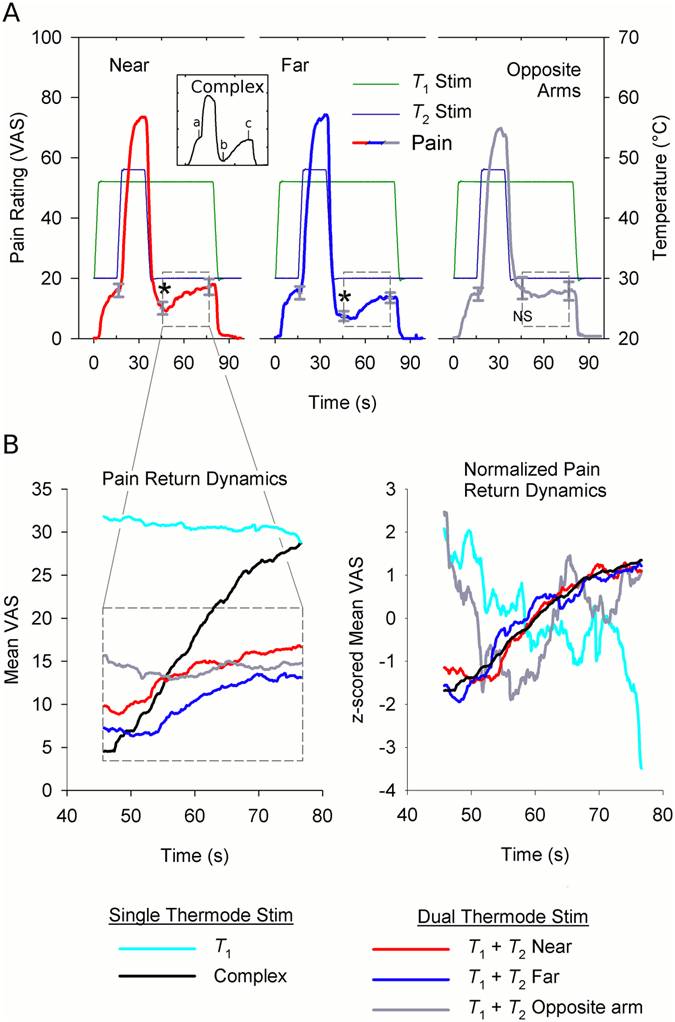Figure 6.

Near and far dual thermode stimuli produce a nonlinear response with the same dynamics as a single complex stimulus. (A) Simultaneous T 1 stimulation and near or far T 2 stimulation, but not T 2 stimulation on the opposite arm, produces a nonlinear group-averaged pain response. Comparisons were performed based on timepoints selected from the complex stimulus response (insert): (a) maximal t 1 VAS, (b) minimal t 3 VAS and (c) maximal t 3 VAS. Stimulus intensity was invariant between (a), (b) and (c) in dual thermode stimuli, but pain responses at (a) and (c) were significantly higher than (b) after near (p = 0.010) or far T 2 stimulation (p = 0.002; planned contrast). No differences were found after T 2 stimulation of the opposing arm (p = 0.87). (B) In near and far dual thermode stimuli the nonlinear response dynamics are the same as for the single thermode complex stimulus. Pain return dynamics were specifically examined between (b) and (c) (top panel, insert). Group averaged responses to near or far dual thermode stimuli significantly correlate with responses to the complex but not T 1 stimulus while responses to opposite arm stimulation correlates with neither (left). Correlations between responses to near, far, and single thermode complex stimulation support the conclusion that the same process underlies all three nonlinear responses (multiple regression with ARIMA errors; near vs. complex: t = 4.54, p < 1e-05; far vs complex t = 1.99, p = 0.047; df = 437). Dynamical equivalence is best illustrated with variance normalized (z-scored) timeseries (right). *p < 0.05. NS = non significant.
